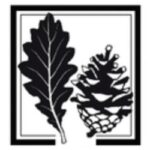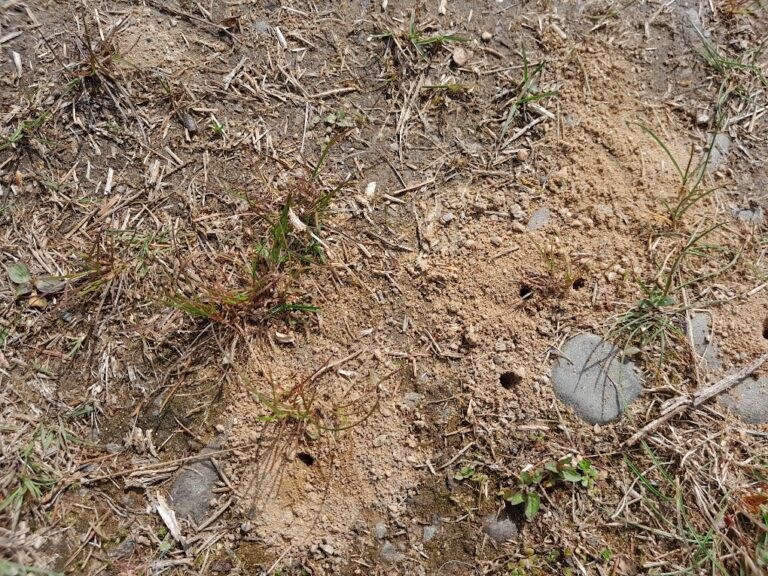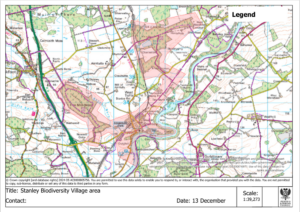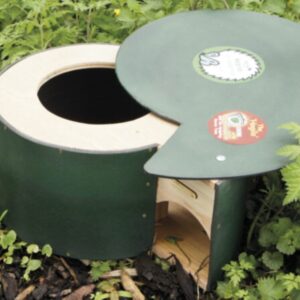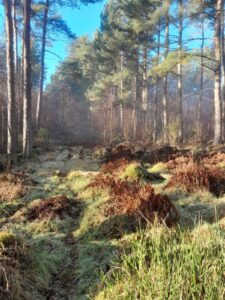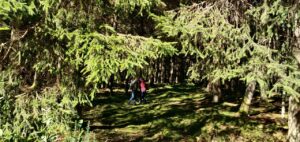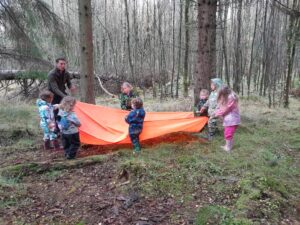Emergence points of mining bees from underground burrows in Taymount Wood May 2023
What has WSWG been doing this month?
On 13 and 14 May, WSWG held a “Woodland Pick and Mix” Event at Taymount Wood which attracted a small and enthusiastic group of volunteers each day. We pitched the gazebo in the woods near the main entrance as our rest point and undertook a range of activities nearby. Using plastic-free tubes and reusing old plastic tubes, we protected naturally regenerating rowan, oak, a few holly and several previously planted bird cherry saplings from deer browsing. In addition, we planted oak saplings grown on from acorns by WSWG members in winter 2020-21, also protecting them from deer and vole damage with tree tubes. Courtesy of the local community’s PKC-funded C406 Verges for Wildflowers not Litter project, we planted native wildflower plugs and sowed wildflower seeds along the woodland edge. There was also time for some more raking of gorse mulch to prevent it suppressing the wildflowers along the track verges and to further clear the track surfaces for walkers. (Btw, we’d love to know who it was who left their oak saplings for us at the entrance gate! If it was you, thank you and we’d love to know who you are! Your little oaks are now in the ground hopefully to become big oaks in the fullness of time!)
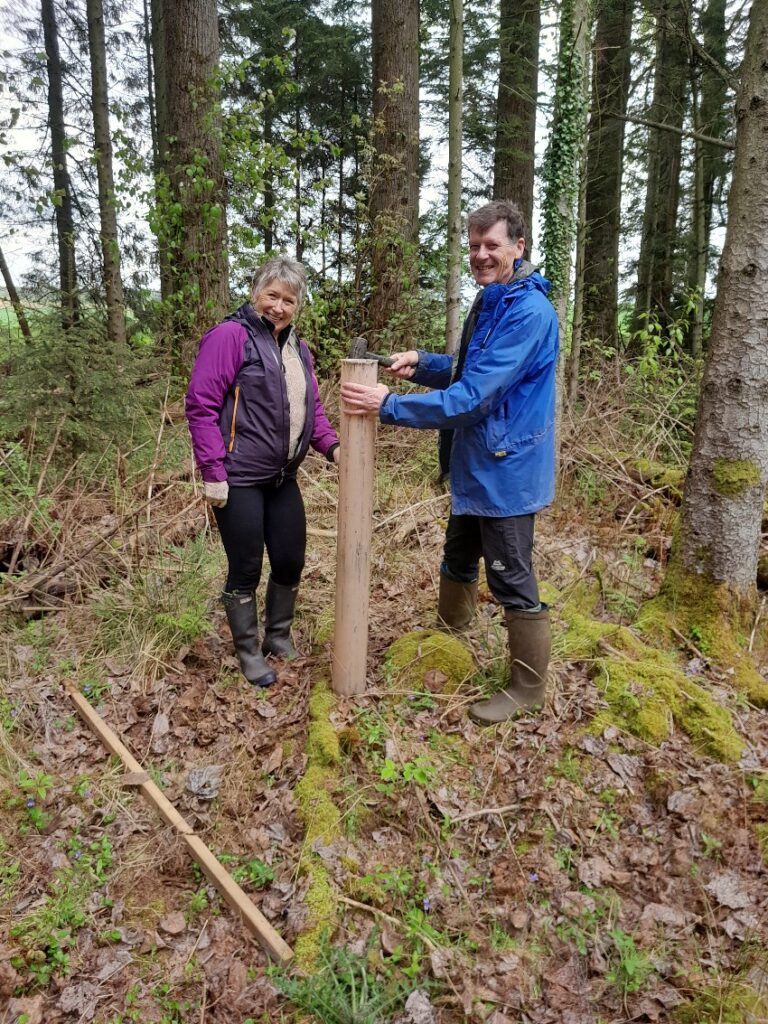
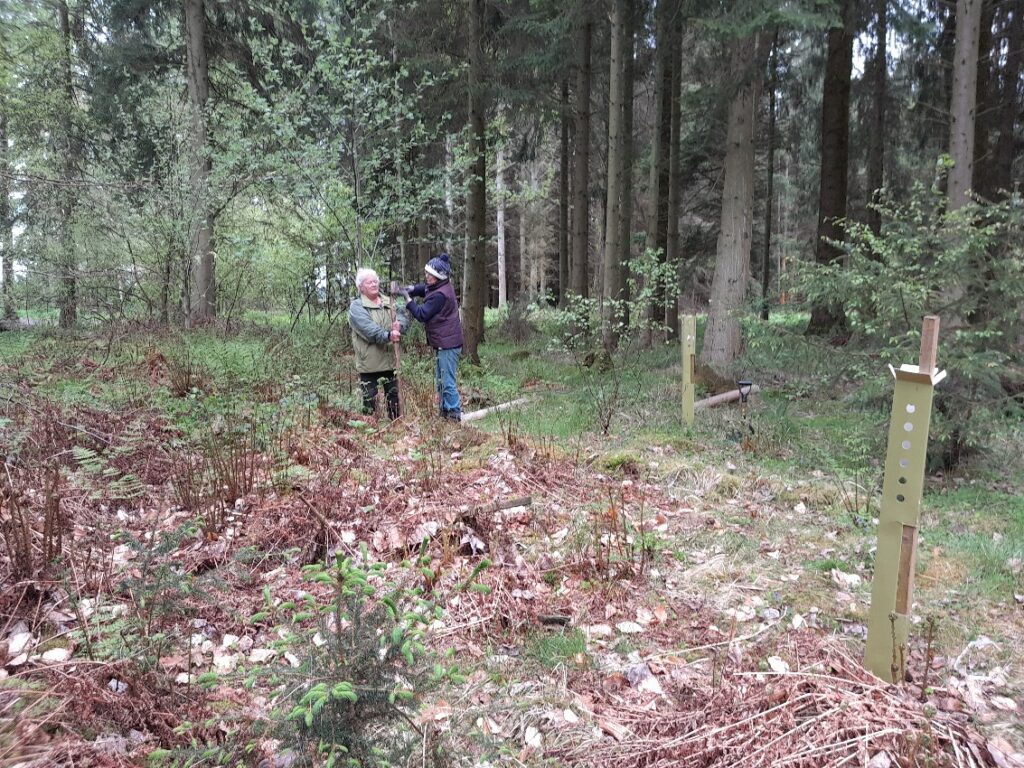
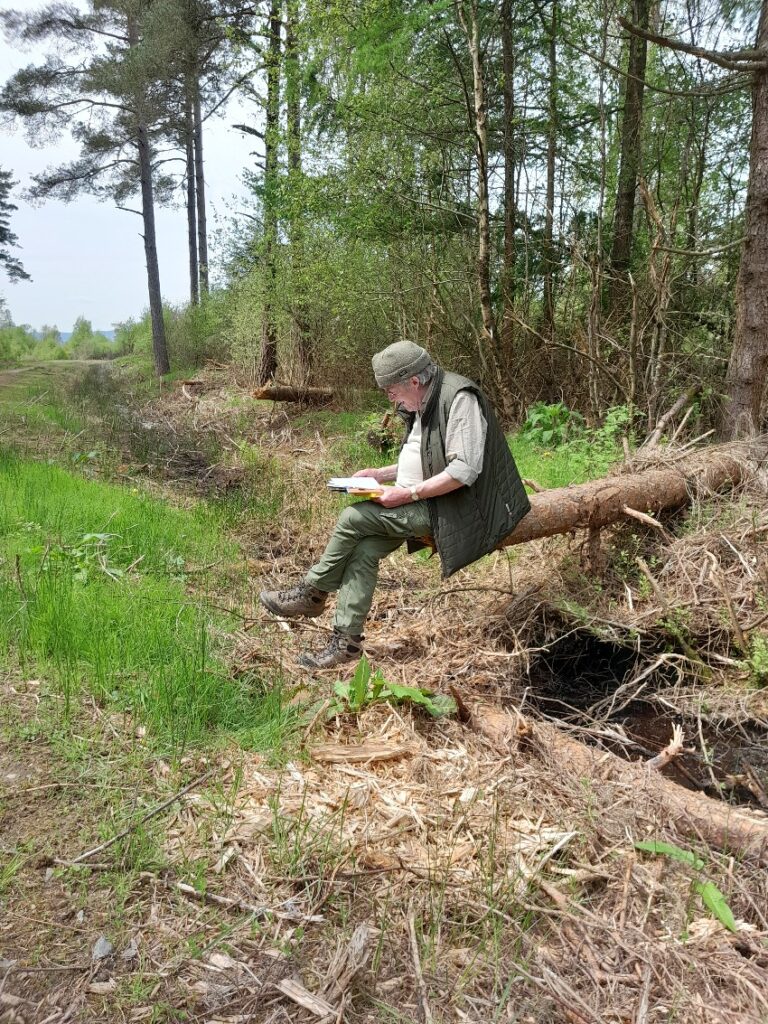
On 17 May, we did a recce of Taymount and Five Mile Woods with historian, Christopher Dingwall, in preparation for his talk and walk on the history of the woods being organised as a joint event between West Stormont Historical Society and WSWG in September. At both woods we also saw the pleasing results of our gorse raking activities with widespread dog violets and other wildflower species along the verges and little excavation piles signposting where mining bees had exited their winter burrows. In Five Mile Wood, we added a new species to the WSWG butterfly list – three speckled wood butterflies – and then saw more of them in Taymount Wood a week later. That makes 15 butterfly species altogether.
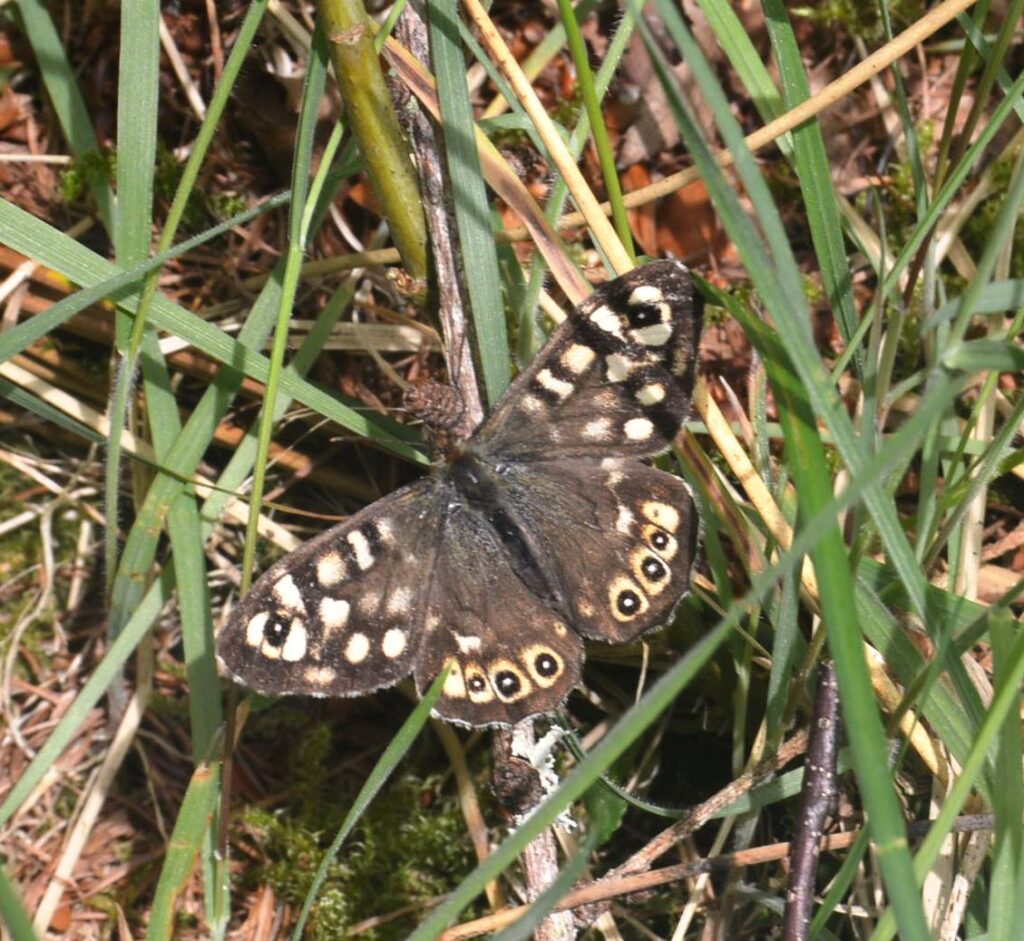
We also saw our first common lizard in Taymount Wood this month basking on a sunny banking, then scuttling away into the nearby cover of thick grassy vegetation when it saw us. (Sorry – no photo despite best attempt!) Its relatively small size (about 6-7cm long) suggested a juvenile, perhaps from 2022. It was also very dark in colour, almost black. Very young lizards are usually dark, but would typically have become lighter, brighter and more patterned by this age. At this lizard’s age, this dark (melanistic) colouration could indicate an adaptation to living in more shaded woodland habitat, with dark body colour absorbing heat better. Common lizards are protected but sadly yet another native species in decline. This discovery was therefore very exciting as, up to now, WSWG has thought of it as an absent species we could perhaps introduce in the future along suitably sun-warmed, derelict old dykelines. So what is needed now is for our focus to switch to protecting, enhancing and monitoring its existing habitat and population.
On 24 May, three WSWG trustees attended a Funding Roadshow in Coupar Angus organised through the Perth and Kinross Community Planning Partnership at which we met with the Gannochy Trust and also with the Third Sector Interface who are very kindly helping WSWG with various aspects of the CATS process.
In addition to their recent much appreciated annual donation, WSWG received a further very generous community benefit payment from the Highland Community Energy Society’s Littleton Burn Hydro Project at Dalguise. A huge thank you to them for their ongoing support of the WSWG Project.
Good progress has also been made with our CATS Application at a very useful meeting with Forestry and Land Scotland and Scottish Forestry on 30 May setting out the final stages ahead.
On 9 and 10 June, WSWG had a stall at the Community Futures Open Days in Stanley Village Hall as part of the Stanley Community Action Plan consultation process. It was a great opportunity to catch up with many WSWG members and speak to others about the WSWG Project and the West Stormont Connect concept. At the table next to us was Cath Lloyd of the Tayside Biodiversity Partnership, who, amongst other things, was there to promote the idea of Stanley becoming a Biodiversity Village. This idea was well received, with a good number of people` keen to get involved, and so the next step will be to get the ball rolling with a mapping exercise of the village and surrounding area. We’ll keep you posted on this.
On 11 June, WSWG had a stall at the Logiealmond Plant Sale at Chapelhill Community Centre. It was lovely to be able to catch up with WSWG members from the area and to have an in-person opportunity to tell more people in the Glen about the WSWG Project and how they can get involved.
Word of the Month
Speckled wood: As the name suggests, this mottled brown and cream butterfly is perfectly camouflaged in dappled sunlit woodlands, where it vigorously chases off any competition for its territory. Various grass species make up the caterpillars’ food plant. The adults feed heavily on aphid honeydew in the tree canopy, choosing wildflowers only in early and late season when aphid populations are low. The speckled wood butterfly has been expanding its range over recent years with warming temperatures.
What’s coming up next?
- Saturday 22 July 12 noon: WSWG hosting a Picnic in Taymount Wood with Tayside Woodland Partnerships. More details to follow if you’d like to come along.
- Monday 25 September 7.30pm Stanley Village Hall: talk by renowned landscape historian, Christopher Dingwall, on the history of Taymount and Five Mile Woods; Wednesday 27 September 11am: guided walk in Taymount Wood with Christopher and WSWG.
- We will hopefully be organising more events in the woods over the summer holidays, so watch this space.
